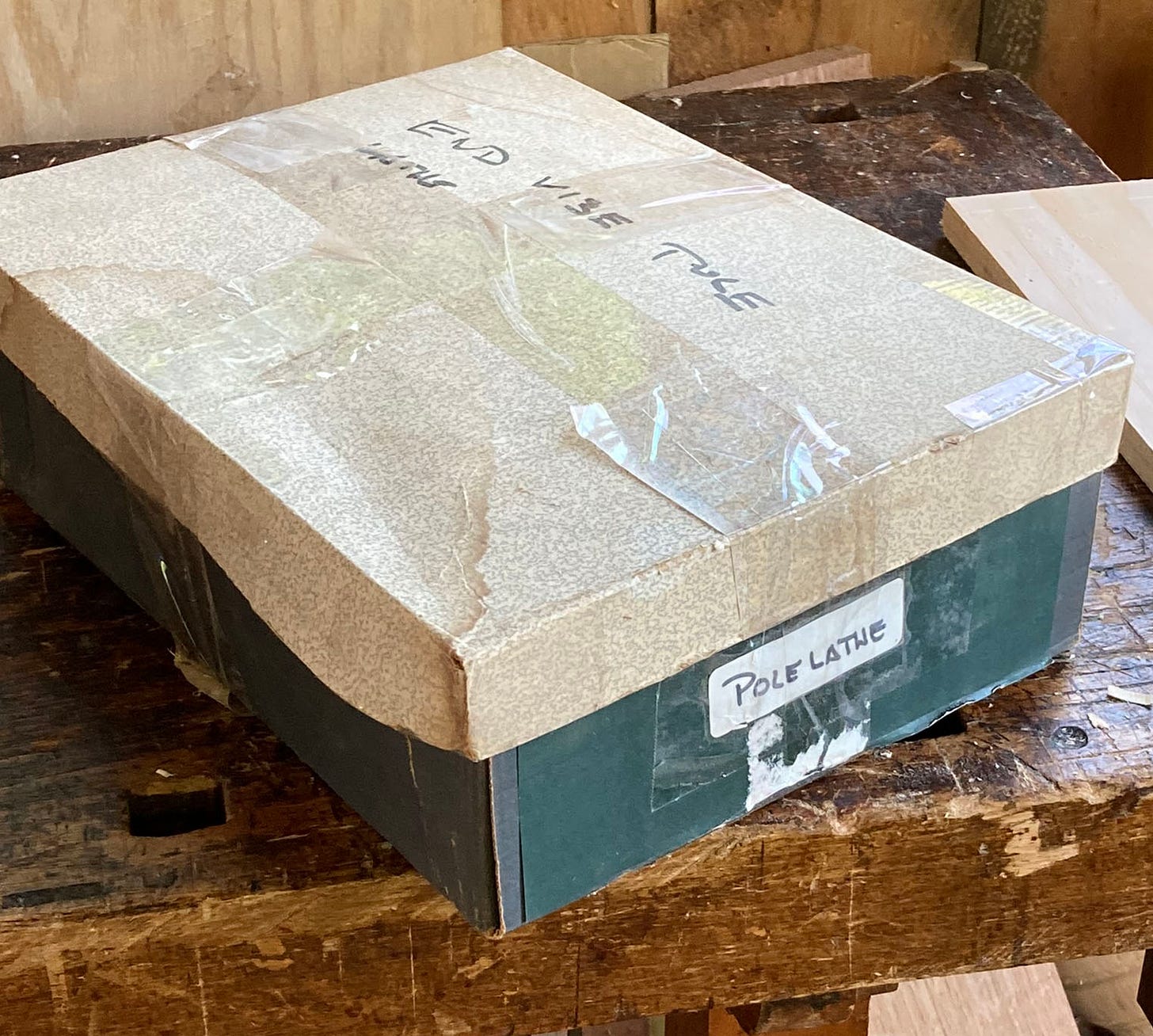I can always tell when Chris Schwarz and the gang at Lost Art Press are up to something, I get a slew of new followers, subscribers, etc every so often thanks to them. For those of you new here, hello & welcome. One nearly-all-consuming project of mine these days is what I call my Craft Genealogy. Today’s post is part of that project, though I have no idea if I’ll put any of this one in the eventual book.
We often hear people talking about making sure the craft continues on after today’s old practitioners are gone. I’m all for that, but I’m also not worried too much about it. People are always going to want to make stuff. Some will do it this way, some will do it that way.
My concern is to not lose sight of the people who got us to this point. And that’s the gist of my Craft Genealogy project/book. It follows some threads this way & that, focusing on the people from whom I learned about hand tools, wood, furniture and more. Its scope will purposely be very narrow - the people, with one exception, were all teachers and/or friends of mine. The best-known one was Jennie Alexander, author of Make a Chair from a Tree. I have no shortage of stories about JA. Here’s one of them.
Listen - that’s the sound of Jennie Alexander symbolically rolling in her grave. I dug out an old cardboard box from under the bench and strolled down memory lane to test out one of JA’s pet projects. The End Vise Pole Lathe.
I looked up her old article about it, from Woodwork magazine, June 2000. So a mere 24 years ago. It says I took the photos. I believe it. What it doesn't say is how stupid I thought the whole thing was. But just to be fair, I thought I’d give it a test-drive when I had to make a new handle for one of my carving gouges. So I’ll back up and start at the beginning. Long before I knew her, Drew Langsner, or Roy Underhill - all three of those folks were touting the book Woodworking in Estonia - by the time I caught on, finding that book was just about impossible. Eventually JA gave me an extra copy she somehow acquired - long before we ever knew Chris Schwarz, long before Lost Art Press existed. Long before Woodworking in Estonia became widely available thanks to Chris & LAP.
In that book is a line drawing of a device JA named the End Vise Pole Lathe.
The author talks about the bow lathe, then goes further:
“The next stage, developed from the hand operated bow lathe, is similar but operated with a foot pedal (fig. 204), which leaves both hands free to do the turning and makes possible the processing of larger objects.”
Jennie had a long fascination with this book. In June of 1976 Alexander was reading a copy of Woodworking in Estonia that she got through the library in Baltimore. She sent a letter to her friend Charles Hummel, then-curator at Winterthur - particularly commenting on the section on turning.
Keep reading with a 7-day free trial
Subscribe to Follansbee's Substack to keep reading this post and get 7 days of free access to the full post archives.





